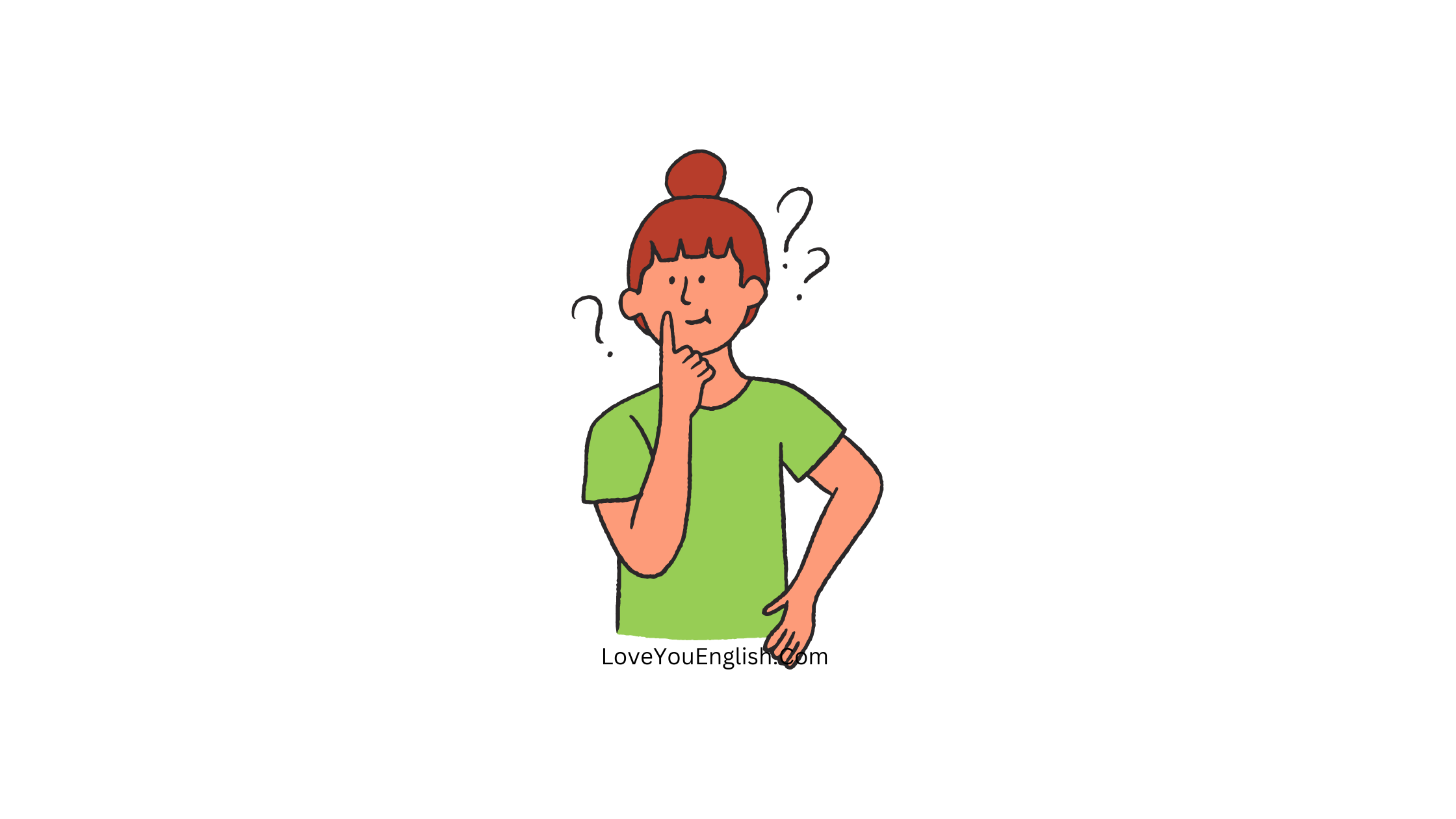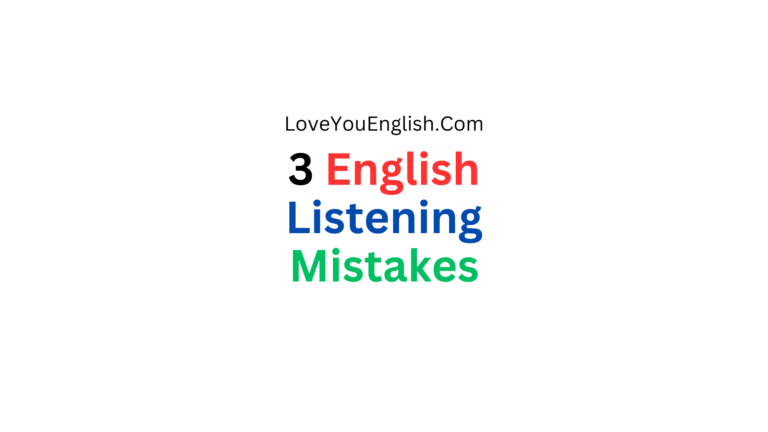Train Your Brain to Think in English
Train Your Brain to Think in English
We all know that being able to think in a foreign language is a big sign that you’re really good at it.
But did you know that it’s actually the fifth important language skill you need to work on?
It’s just as important as speaking, listening, reading, and writing.
Thinking in a foreign language can help you become fluent in that language, not just show that you already are.
And just like the other skills, you can definitely learn how to do it.
All you need is some practice!
Let’s talk about how you can start doing this.
Translating your thoughts
Did you ever think about this?
It may seem like the easiest thing to do, but not everyone does it. Some people think in pictures or numbers instead of words.
If you don’t already talk to yourself in your mind, start doing it on purpose!
This is the best way to practice. When you remember what someone said, say it in your head again.
When you think about what you have to do each day, say it in your head.
When you’re complaining about the weather, your neighbors, or the long line at the store… say it in your head!
Begin by describing the things around you.
For example, when you see a tree, try to think of the word for “tree” in your target language. If you can’t remember the word for tree, you can think of words like “green” or “wood” to describe it.
This applies to buildings, animals, clothing, and anything else you see.
If you’re struggling with vocabulary, you can even try counting people, animals, or objects in your head. Every little bit helps!
Remember to double check your translations by asking a native speaker or searching online to make sure you’re using the correct phrases.
If you’re unsure, try to come up with an approximation that you’re confident is correct.
It’s important to double check your language usage to avoid developing bad habits.
While concrete nouns, verbs, and adjectives are easier to translate, idiomatic phrases can be more challenging.
So, always make sure you’re using the right idioms and expressions.
Begin using dictionaries that are only in one language.
When you use a monolingual dictionary, you don’t translate words from your target language to your native language or vice versa.
Instead, you search for a word in your target language and find its definition in the same language.
It’s like when you use a dictionary to look up a word in your native language.
Using a monolingual dictionary is an important step in your language learning journey because it means you’re using the language itself to learn, rather than relying on your native language.
However, it’s best to use a monolingual dictionary when you’re at a mid- to high-intermediate level, where you can already understand a mainstream novel or follow formal news on the radio.
Otherwise, you might spend a lot of time looking up words in the definitions of other words, although that can still be a helpful exercise.
Check out a monolingual dictionary!
WordReference offers an awesome online English-English dictionary (and other languages too).
Just searching “dictionary” in your target language might not be enough, so consider asking other learners on sites like Quora or Language Learners’ Forum for recommendations.
Flashcards are also a great tool to use. Pairing monolingual dictionaries with sentence flashcards on SRS can be super effective.
Each flashcard will have a sentence on the front, and you can use your monolingual dictionary to look up unfamiliar words on the back of the cards.
You can even add definitions if needed.
If the meaning is too hard to understand (like when you try to understand what “oak” or “ladder” means… simple things with complicated explanations), just put a picture instead!
That way, you can understand without any trouble from English!
Writing journal
When you write in a journal, you are actually writing down your thoughts.
This helps you get used to thinking in the language you are learning, especially if you find thinking to be difficult at first.
It’s like practicing Step #1, but it’s slower and you can stay in one place and look up things if you need to.
It’s also a good option if you are busy most of the time and don’t have the freedom to think purposefully in your target language. Plus, it’s a great way to practice writing!
I discovered this myself when I was practicing writing in Spanish.
After a quick writing session, I noticed that I kept thinking in Spanish for a while.
Spending time intentionally formulating thoughts in Spanish really helped me get into the mindset of thinking in my target language.
You should try writing a daily monologue! It’s a cool way to express yourself and talk about anything that’s on your mind.
You can write about your job, your family, or even share your opinions on different topics.
It’s like having a diary in the language you’re learning!
If you want to improve, you can ask native speakers or other learners on platforms like italki for corrections and feedback.
On italki, you can even hire a private tutor to work with you one on one and get the best feedback possible.
Getting corrections is super helpful because it prevents you from making mistakes and forming bad habits.
Another idea is to keep a private journal on paper.
It’s a nice break from using the internet for language learning, and you can write about anything you want without worrying about anyone else reading it!
Read more first person content
Reading is extremely important when it comes to learning a language.
If you choose to read books written in the first person, you will experience direct advantages in terms of thinking in the language.
Clearly, first person books allow you to delve into the main character’s thoughts, enabling you to develop your own thinking skills! Isn’t that amazing?
Moreover, books provide solutions for those tricky idioms and phrases from Step #1 that are difficult to translate.
By reading books, you will discover how native speakers express abstract ideas, the vocabulary they utilize, and the way they use it.
Get yourself some young adult fiction!
Why young adult?
Well, because books aimed at people your age are really into using the first-person perspective right now. It makes the story feel more personal and relatable.
Plus, the language used in these books is super casual and realistic.
Even if you don’t usually read books for your age group, I really think you should give it a try.
You might discover some new favorite books along the way!
If you’re not sure where to start, why not try reading translated versions of books you’ve already read?
It’s a great way to practice a new language because you already know the story and characters.
It makes understanding the language a lot easier.
If you need some recommendations, I suggest checking out the translated versions of the “Percy Jackson” books or “The Hunger Games.”
They’re both really popular and have exciting stories that will keep you hooked!
If you want to know the titles of these books in another language, just translate the Wikipedia page into that language.
After that, you can search for the title on Amazon!
Make sure to read for 20 minutes every day to get used to thinking in your target language.
Soon enough, you’ll start remembering common phrases, but if you want to learn faster, use that SRS again.
Enter the sentences or phrases you want to remember, and with time, you won’t forget them!
Dive into Authentic Material
One awesome way to begin thinking in your desired language is by surrounding yourself with things made by native speakers.
This can be anything from watching movies and TV shows to reading news articles.
Surrounding yourself with native content will help you get used to how the language is used by people who speak it fluently.
You can try watching your favorite movies or TV shows in the language you’re learning.
There are lots of platforms, like Netflix, that have a wide range of content in different languages.
If you’re just starting out, it might be helpful to watch something you already know.
And if you want an extra challenge, you could even try watching a movie made in the language you’re learning.
Another thing you can do is read the news in the language you’re learning.
As mentioned earlier, reading in the language you’re learning is a great way to train your brain and learn new words in context.
But it doesn’t have to be just fictional books, you can also read the news to stay updated with what’s happening in the country and around the world, and it will also help you think in the language you’re learning.
Listen to music and sing along
In addition to watching movies and TV shows in the language you’re learning; songs can also be a great way to learn.
They’re not only enjoyable to listen to, but they also help you learn new words and phrases.
By listening to songs, you can start thinking in the language instead of translating everything in your head.
It’s like understanding the lyrics without needing to rely on your native language.
Look up the most well-known singers who perform in your target language.
If you’re just starting to explore music in your target language, a quick way to find some tunes is by searching on Google for a list of the top artists who sing in that language.
If you have a favorite music style, try looking that up as well!
YouTube is a great place to listen to music.
Thankfully, these days you can easily find most songs on YouTube.
Make sure to really pay attention while listening to the music. While any kind of listening is good, actively listening can help you understand the lyrics better.
Make sure to do all your daily tasks using the language you are trying to learn.
This strategy is awesome because you don’t need to change your schedule much.
You’re already doing these things, just do them in the language you’re learning!
Whether it’s writing your lists or watching YouTube videos in your target language, there are plenty of ways to practice!
Make your shopping list in the language you’re learning.
This is a great way to practice and see what words you might be missing.
Plus, it helps you think in that language as you go shopping.
For example, if you’re learning Spanish and need bread, write “pan” on your list.
Or if you’re learning French, write “pain.” No matter what language you’re learning, this activity can help you think more in that language.
Write your to-do list in the language you’re learning.
If you want an extra challenge, try writing your to-do lists in the language you’re learning.
This will not only help you remember what you need to do during the day, but it will also help you learn new words and practice thinking in that language as you complete different tasks.
Use Stickers to Spark Your Ideas
What’s a great way to practice thinking in a new language?
Stick labels on things around you in that language!
Labels can be super useful because you get to make them fit your own language learning goals.
For instance, if you’re studying words for things in your house or food, you can put labels on your stuff or on the food containers in your kitchen.
Whenever you walk by or open the cabinet, you’ll see the words.
Labels aren’t just for learning new words, though. They can also help you tell a story in your head.
Check out the steps below to see how to use labels to describe your morning routine.
As you start your morning routine, use labels to help you remember new words and phrases in your target language.
Write them down on sticky notes and place them in the right spots. As you go about your routine, say the words out loud to reinforce your memory.
When you feel ready, cover the labels and try to describe what you’re doing without looking.
If you’re using post-it notes, you can cover the original words with a blank one and remove it later if needed.
This will help you practice recalling the vocabulary before checking it.
Take off the stickers and try to explain what you are doing in your desired language as soon as you wake up.
Taking off the stickers is a big part of learning to think in your desired language and can help you test your abilities.
If you can easily explain what you’re doing without the stickers, then you know you’re ready to move forward and focus on another aspect of thinking in your desired language.
If not, then you will be able to see the areas where you may need to improve.
Talking with native speakers in your target language is a super way to get better at thinking in that language.
When we write, we have lots of time to think about what we want to say, how we say it, and all the rules of grammar. But when we talk, we have to think fast and use the language on the spot.
Look for language exchange events near you.
Depending on where you live, you might find different chances to practice speaking your target language.
You could check out websites like Facebook and Meetup to see if there are any local meetups.
It’s not just a good way to practice, but also a cool way to make new friends!
If you can’t find any in-person events, don’t worry!
There are lots of apps and websites where you can find native speakers to chat with.
And that’s it!
By following these 8 steps, you’ll be able to overcome all the difficult translating you’ve been doing in your mind.
You’ll be on your way to thinking in your desired language and making it a part of you.
Once you’ve mastered thinking in your language, everything else will be easy!







